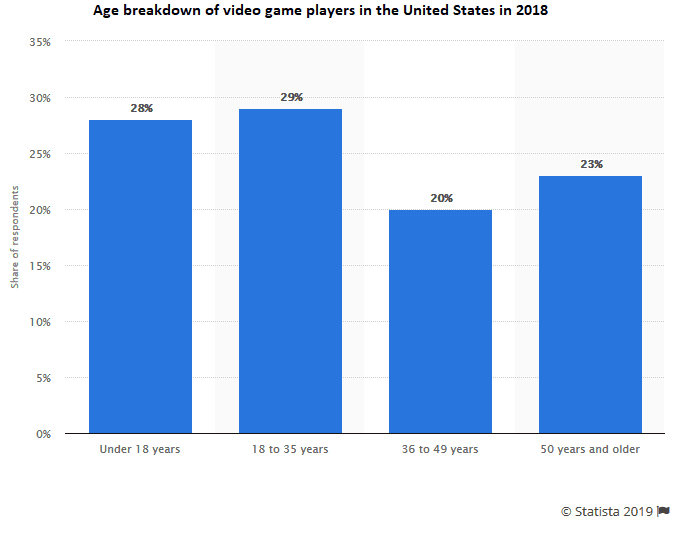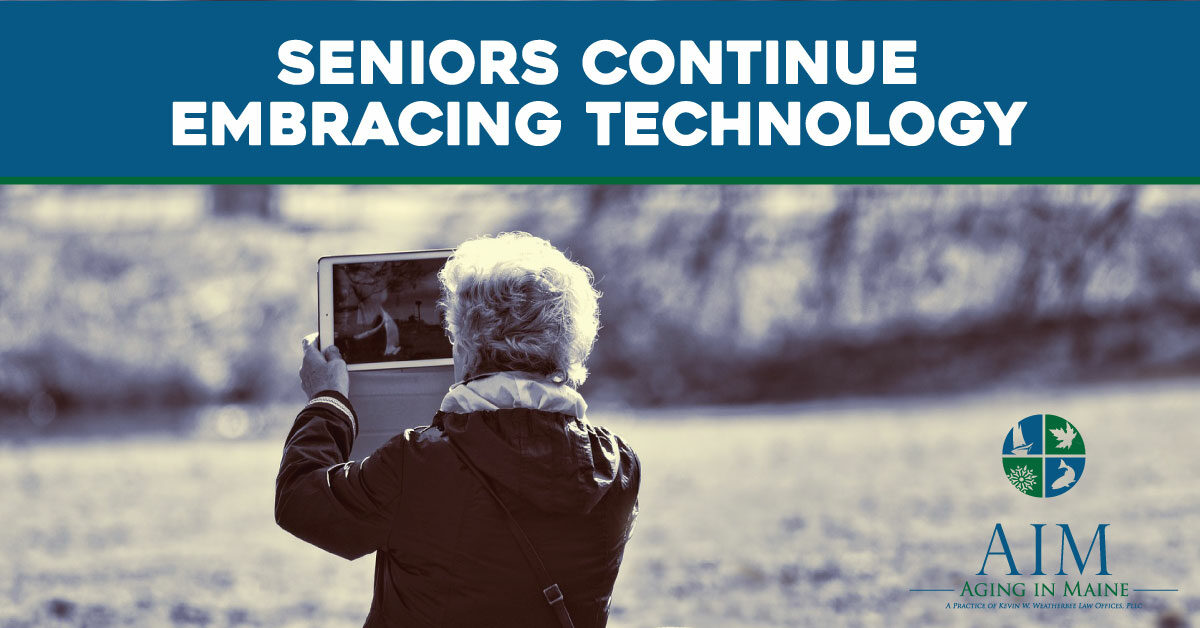Technology is providing seniors with a multitude of applications to improve their health, lifestyle, safety, and entertainment. While the younger generations may think these older Americans are the equivalent of technology dinosaurs, the truth is mid-life, and older Americans are becoming more digitally connected than ever before. The largest tech participating group of these seniors is generally more affluent and has higher degrees of education than their counterparts. Seniors with more limited incomes and lower levels of educational attainment are the most notably absent group in the digital divide between younger and older technology users.
Smartphone ownership and its associated application (app) usage, social media, and online gaming continue to increase at a rapid pace with a full 91 percent of technology users 50 or more saying they use personal technology devices to stay in touch with family and friends. Texting by seniors (86%) has become as pervasive as email (87%). Smartphones are also a handy tool for planning optimal routes to and from locations as well as receiving up to the minute traffic information. Simply put, older Americans now leverage smartphone use in much the same ways that its younger counterparts do and in some ways, seniors (aged 60 – 69) are leading the charge in smartphone use to manage their medical care. Online banking and money management are becoming more prevalent with senior users as they become educated about and employ privacy mechanisms to protect their identity and assets in an online and cloud storage world.
Online learning is prevalent in the senior demographic. An AARP survey shows 23 percent of older adults embrace online learning by taking classes for certificates, obtaining degrees, and how to Do It Yourself (DIY) tutorials. This percent of seniors in online learning is likely to continue its increase as mental agility and longevity become increasingly important due to the alarming rise of dementia disease in the aging population. While there is no direct evidence linking online learning to the staving off of dementia, it cannot hurt a senior to continue with lifelong learning as it may provide a sense of control and well being during their good years.
The use of virtual reality in VE, virtual environment, is also on the rise for seniors. The growth rate is currently about 4 percent a year with 13 percent of adults aged 50 or more engaging in the technology. Nearly 90 percent of all virtual reality headsets are smart and mobile phone based. The ease of porting a smartphone into a headset which operates as the screen makes virtual reality a compelling tool for aging seniors. While it provides immersive realities for gaming entertainment, it also can give extensive exploration opportunities for those seniors with limited mobility. Imagine a senior who cannot walk being able to experience a tour of the ancient Greek site the Acropolis, enjoying a virtual scuba dive in the Great Barrier Reef, or taking part in a guided tour through a faraway museum without ever leaving their home, wheel chair, or bed. The mental stimulation and joy it can bring are just beginning to be tapped for the senior market. Virtual reality (VR) is projected to impact the gaming industry more profoundly than any other industry, and gamers include the senior market in a balanced way comparative to different age groups.

https://www.statista.com/statistics/189582/age-of-us-video-game-players-since-2010
Wearable technology is gaining popularity among the senior market. They include products like smart watches, smart jewelry, fitness trackers, even smart clothing. While being worn, they provide intelligent assistance that can augment memory, intellect, communication, creativity, and physical abilities and senses. They also come replete with challenges such as interface interferences, power requirements, network resources, and privacy concerns. Wearable fitness trackers are becoming commonplace in assisted living, and nursing facilities as the technology will alert medical staff when a patient’s vitals are outside of their norm even if that worker is engaged in other tasks.
Worldwide, corporations are very interested in wearable technologies, particularly as it relates to medical issues. Some seniors who would not qualify for implant surgery because of pre-existing health conditions might be able to use a wearable pacemaker rather than having a surgical implant procedure. Other techniques for nonsurgical intervention include smart patches and electronic tattoos that can regulate dysfunctional systems in the body. For those seniors who can tolerate implant surgeries, new and innovative ideas for micro device implants are bringing forward the concept of the transhuman. Transhuman is defined as a standard biological human being who is augmented by implants that might provide improved intelligence, awareness, strength, or durability. Even in the absence of a serious health issue, implants may soon be able to enhance the medical monitoring of seniors in their daily lives. Think of it as a highly accurate fitness tracker implant. These implants in “transhumans” may be able to observe developing physiological and psychological trends and predict adequate responses to health changes in aging adults.
Finally, the video game industry is one of the fastest growing sectors in the US economy. Annual sales in the gaming vertical of “techenomics” have reached $23 billion and are projected to continue to increase. While some of the games seniors are playing online are in the hopes of keeping memory and brain function in good working order, 38 percent of adults aged 50 or more are video gamers purely for entertainment purposes. While these games may provide entertainment and human connection (in situ or online), they also may share cognitive, and brain benefits as well as the senior adapts to ever-changing game scenarios, updated versions and expansions of online games.
It is projected that seniors will continue to increase their exposure to and use of technologies at many levels. Development to meet the demands of senior needs coupled with their purchasing power will drive the technology industry for decades to come in ways that are not even imagined yet. For now, aging Americans are embracing technology and the benefits it brings to their lives.




